Alhambra-Rodriguez de Guzmán, C, et al. Improved outcomes of incarcerated femoral hernia: a multivariate analysis of predictive factors of bowel ischemia and potential impact on postoperative complications. Am J Surg. 2013; 205(2):188–193.
Burkhardt, JH, et al. Diagnosis of inguinal region hernias with axial CT: the lateral crescent sign and other key findings. Radiographics. 2011; 31(2):E1–12.
Cherian, PT, et al. The diagnosis and classification of inguinal and femoral hernia on multisection spiral CT. Clin Radiol. 2008; 63(2):184–192.
Cherian, PT, et al. Radiologic anatomy of the inguinofemoral region: insights from MDCT. AJR Am J Roentgenol. 2007; 189(4):W177–W183.
Suzuki, S, et al. Differentiation of femoral versus inguinal hernia: CT findings. AJR Am J Roentgenol. 2007; 189(2):W78–W83.
Akopian, G, et al. De Garengeot hernia: appendicitis within a femoral hernia. Am Surg. 2005; 71(6):526–527.
Bringman, S, et al. Intestinal obstruction after inguinal and femoral hernia repair: a study of 33,275 operations during 1992-2000 in Sweden. Hernia. 2005; 9(2):178–183.
Holzheimer, RG. Inguinal Hernia: classification, diagnosis and treatment—classic, traumatic and Sportsman’s hernia. Eur J Med Res. 2005; 10(3):121–134.
Ikossi, DG, et al. Laparoscopic femoral hernia repair using umbilical ligament as plug. J Laparoendosc Adv Surg Tech A. 2005; 15(2):197–200.
Alvarez, JA, et al. Incarcerated groin hernias in adults: presentation and outcome. Hernia. 2004; 8(2):121–126.
Malek, S, et al. Emergency repair of groin herniae: outcome and implications for elective surgery waiting times. Int J Clin Pract. 2004; 58(2):207–209.
Hachisuka, T. Femoral hernia repair. Surg Clin North Am. 2003; 83(5):1189–1205.
Swarnkar, K, et al. Sutureless mesh-plug femoral hernioplasty. Am J Surg. 2003; 186(2):201–202.
Zollinger, RM, Jr. Classification systems for groin hernias. Surg Clin North Am. 2003; 83(5):1053–1063.
Lau, WY. History of treatment of groin hernia. World J Surg. 2002; 26(6):748–759.
Dieudonne, G. Plug repair of groin hernias: a 10-year experience. Hernia. 2001; 5(4):189–191.
Zhang, GQ, et al. Groin hernias in adults: value of color Doppler sonography in their classification. J Clin Ultrasound. 2001; 29(8):429–434.
Ianora, AA, et al. Abdominal wall hernias: imaging with spiral CT. Eur Radiol. 2000; 10(6):914–919.
Toms, AP, et al. Illustrated review of new imaging techniques in the diagnosis of abdominal wall hernias. Br J Surg. 1999; 86(10):1243–1249.
Loftus, WK, et al. Case report: Femoral hernia causing small bowel obstruction—ultrasound diagnosis. Clin Radiol. 1998; 53(8):618–619.
Radcliffe, G, et al. Reappraisal of femoral hernia in children. Br J Surg. 1997; 84(1):58–60.
Harrison, LA, et al. Abdominal wall hernias: review of herniography and correlation with cross-sectional imaging. Radiographics. 1995; 15(2):315–332.
Chamary, VL. Femoral hernia: intestinal obstruction is an unrecognized source of morbidity and mortality. Br J Surg. 1993; 80(2):230–232.
Lewin, JR. Femoral hernia with upward extension into abdominal wall: CT diagnosis. AJR Am J Roentgenol. 1981; 136(1):206–207.
 Abdominal contents within inguinal canal anteromedial to femoral vessels with extension into scrotum
Abdominal contents within inguinal canal anteromedial to femoral vessels with extension into scrotum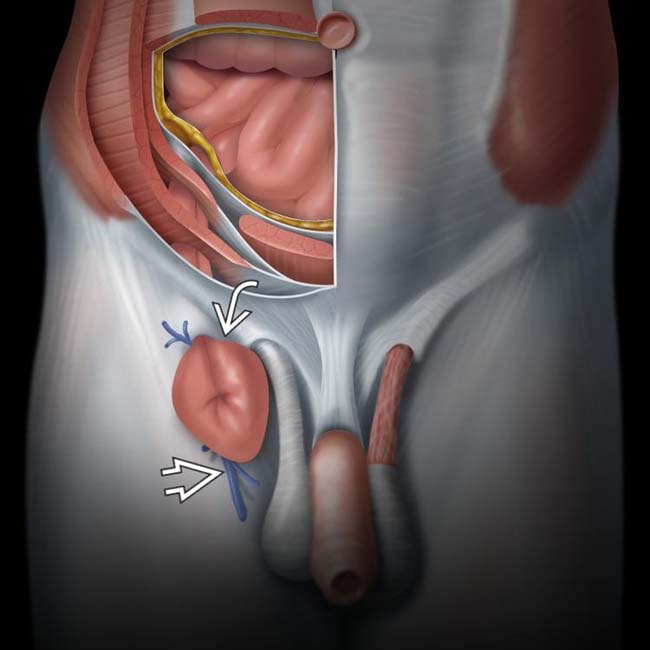
 closely associated with the femoral vein
closely associated with the femoral vein  . Femoral hernias are usually found medial to the femoral vessels with frequent compression of the femoral vein.
. Femoral hernias are usually found medial to the femoral vessels with frequent compression of the femoral vein.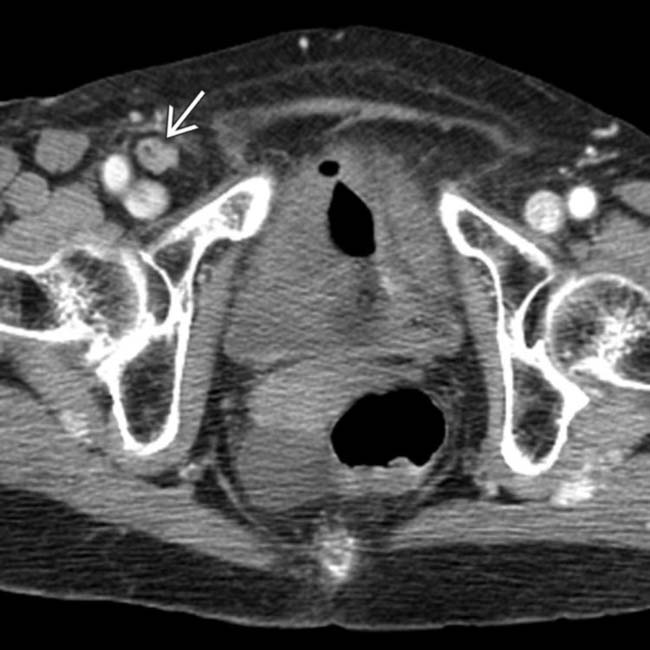
 lying within the femoral canal, compressing the femoral vessels, compatible with a femoral hernia.
lying within the femoral canal, compressing the femoral vessels, compatible with a femoral hernia.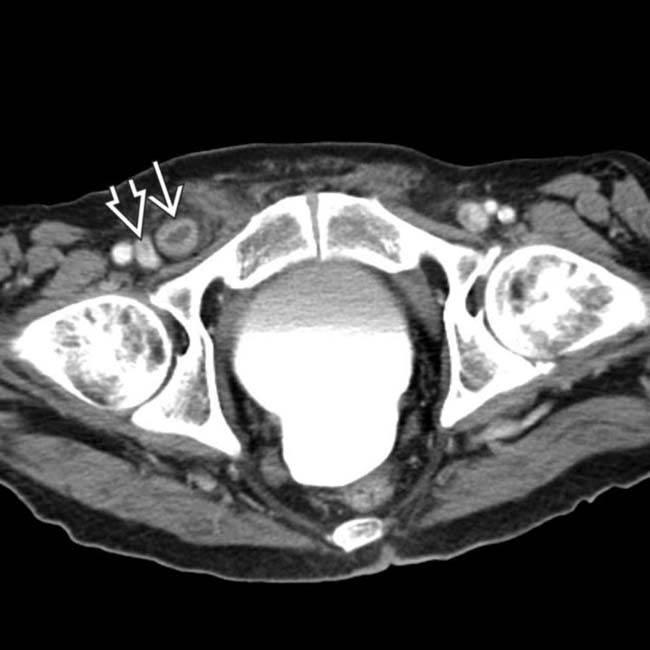
 herniating into the right groin medial to the femoral vessels. Notice that the femoral vein
herniating into the right groin medial to the femoral vessels. Notice that the femoral vein  is being compressed, and the herniated bowel lies posterolateral to the pubic tubercle.
is being compressed, and the herniated bowel lies posterolateral to the pubic tubercle.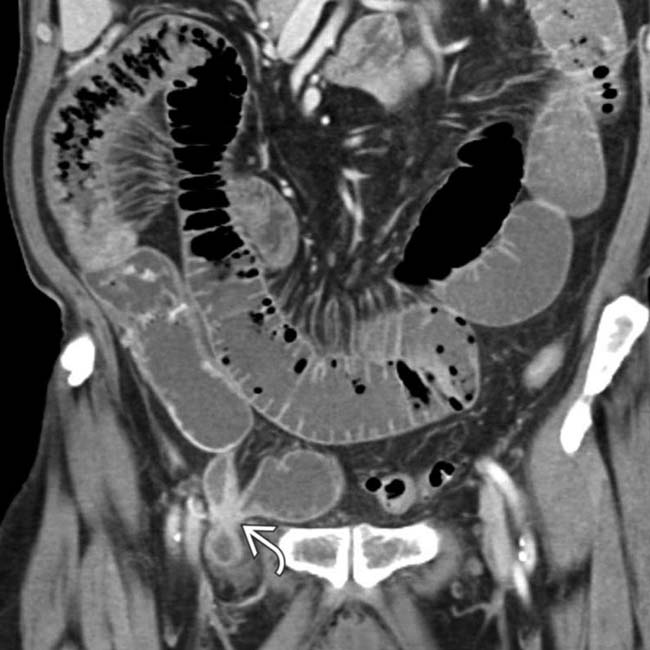
 within the hernia. This thickened, hyperenhancing bowel within the hernia sac was found to be ischemic at surgery. Femoral hernias are at high risk for strangulation and obstruction.
within the hernia. This thickened, hyperenhancing bowel within the hernia sac was found to be ischemic at surgery. Femoral hernias are at high risk for strangulation and obstruction.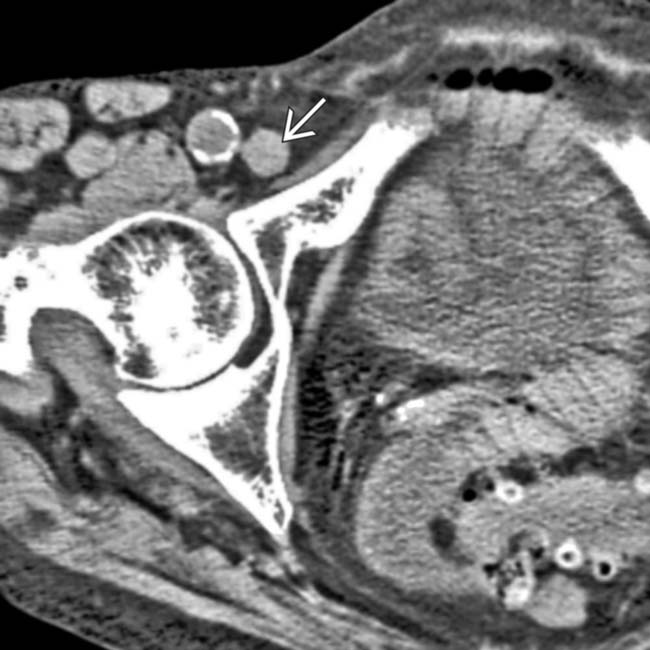
 .
.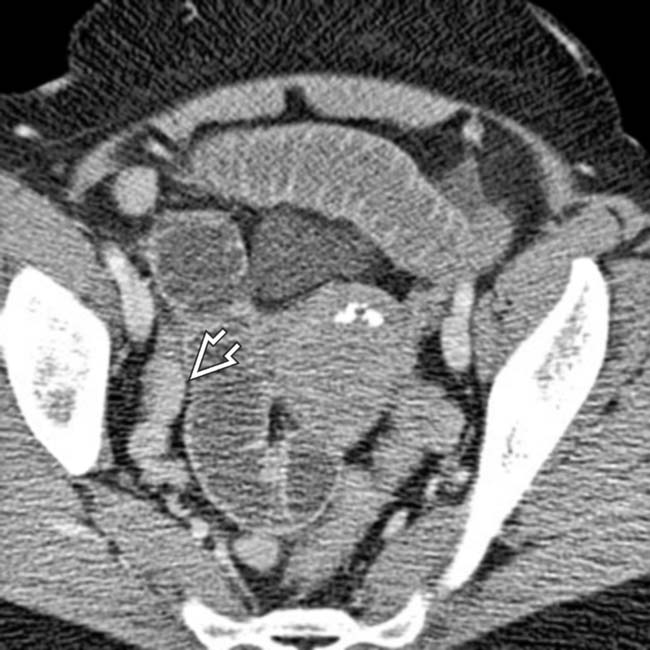
 .
.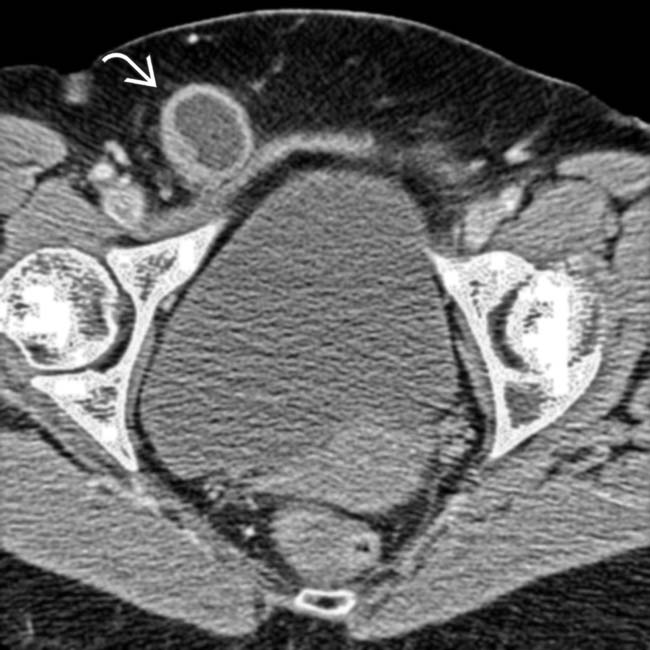
 .
.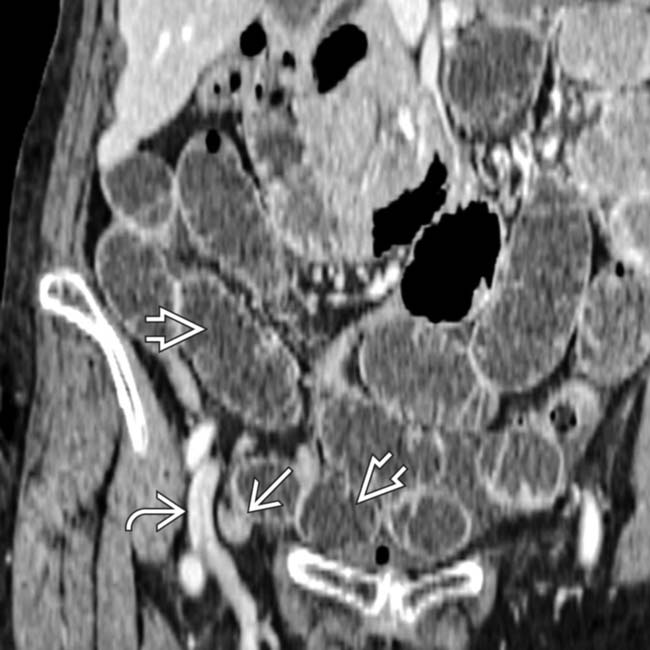
 is medial to the femoral artery
is medial to the femoral artery  . Note the proximal dilation of the small bowel due to obstruction
. Note the proximal dilation of the small bowel due to obstruction  .
.
 coursing into the femoral ring medial to the femoral vessels; the transition point from the dilated to the decompressed bowel, causing a small bowel obstruction. Note the presence of diverticula
coursing into the femoral ring medial to the femoral vessels; the transition point from the dilated to the decompressed bowel, causing a small bowel obstruction. Note the presence of diverticula  within the decompressed sigmoid colon.
within the decompressed sigmoid colon.






























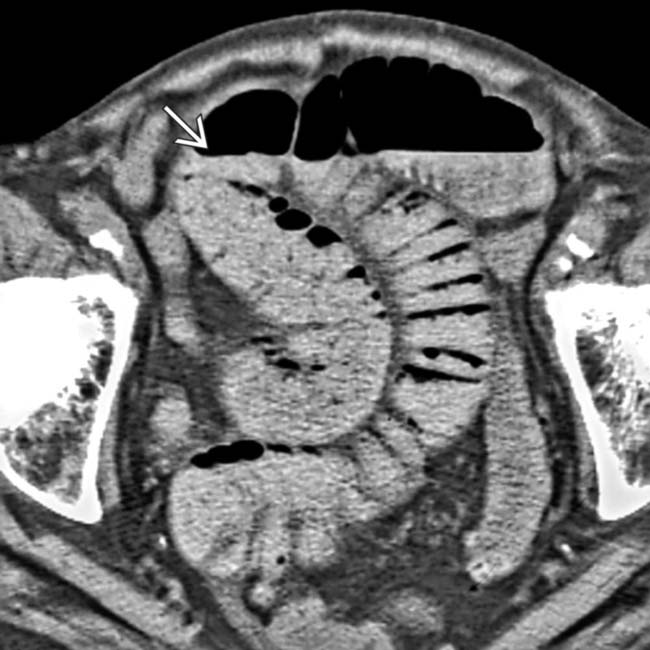
 .
.
 .
.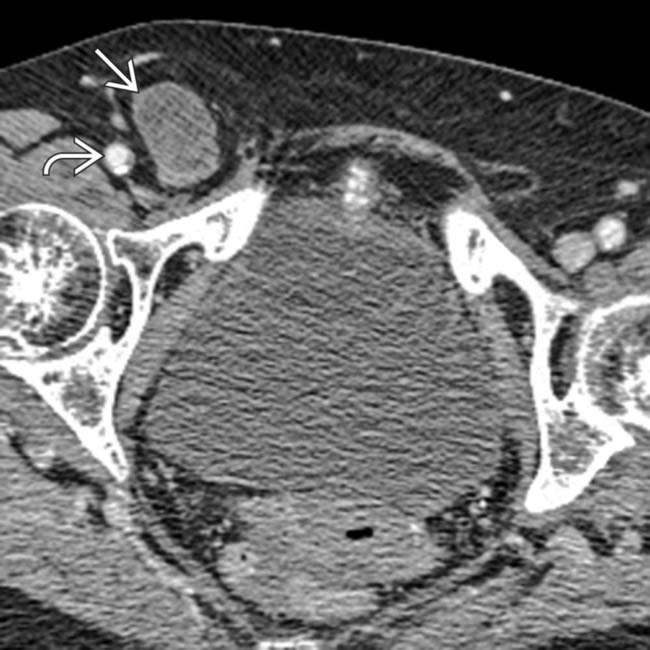
 medial to the femoral vein
medial to the femoral vein  .
.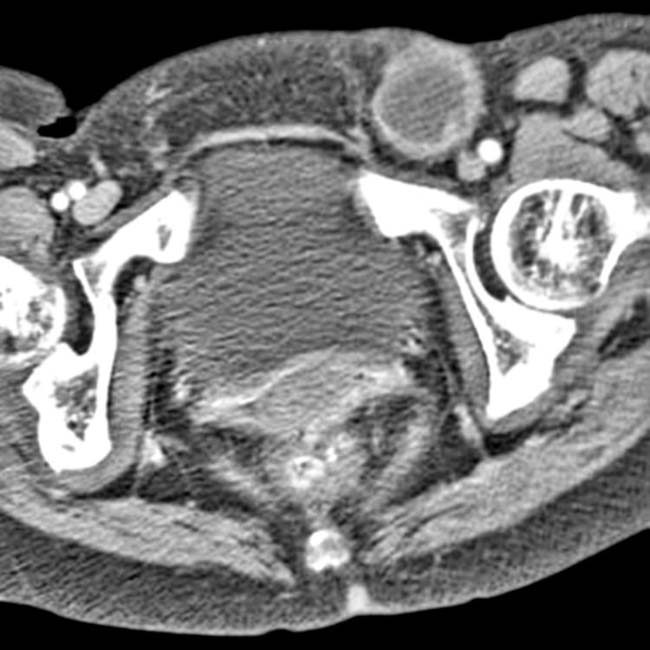
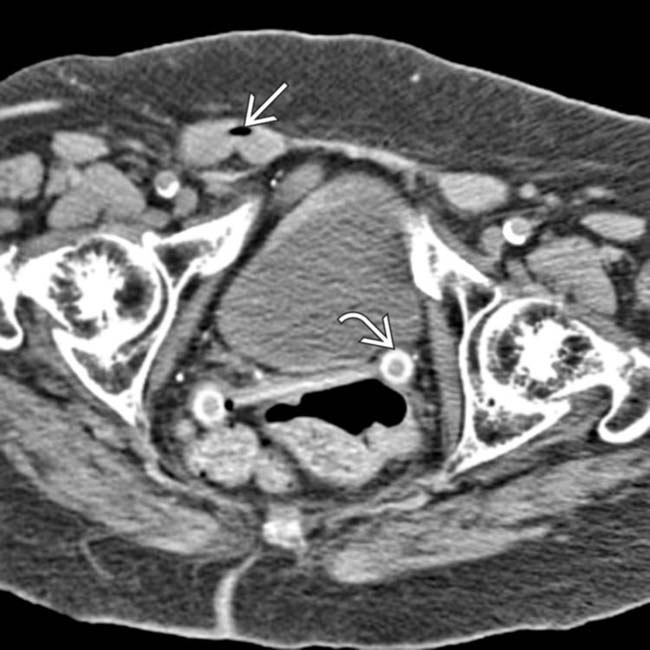
 and pessary
and pessary  .
.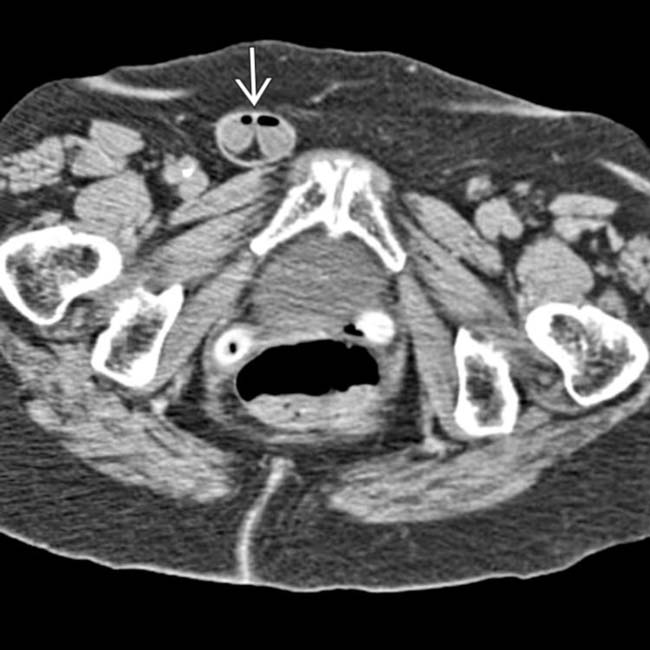
 containing small bowel that caused obstruction.
containing small bowel that caused obstruction.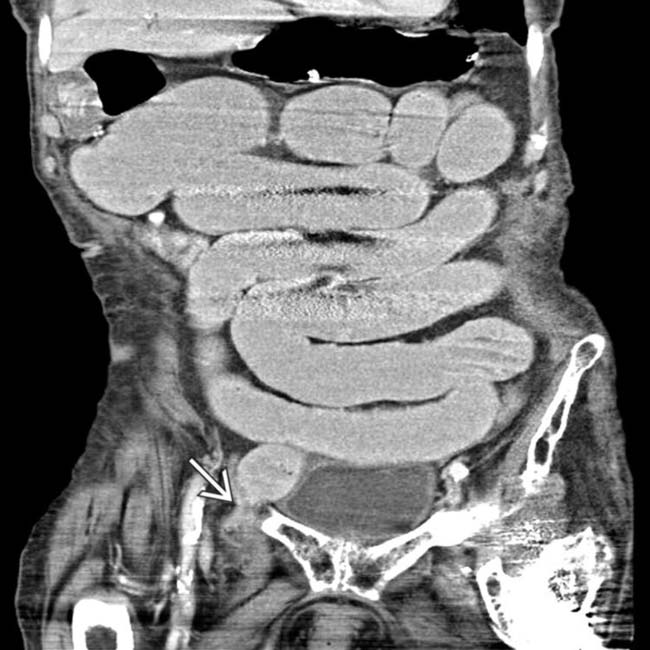
 within the femoral ring.
within the femoral ring.


